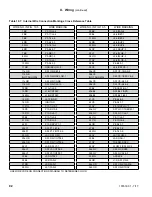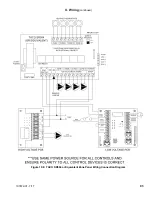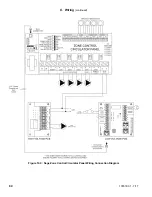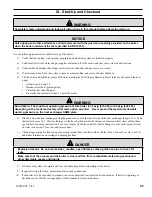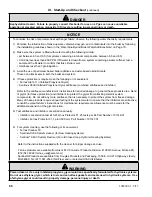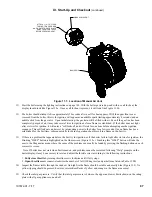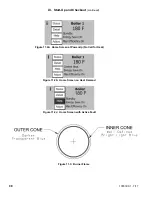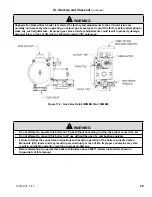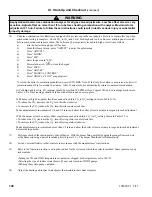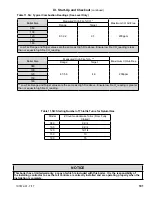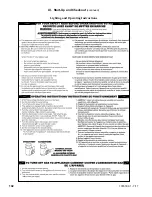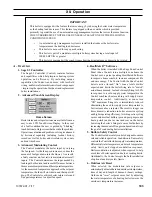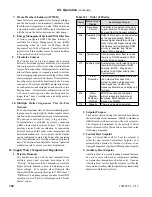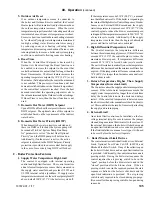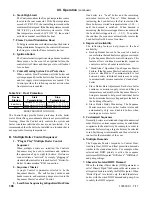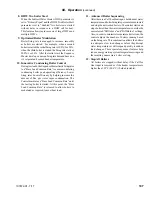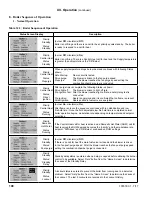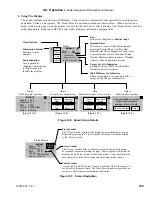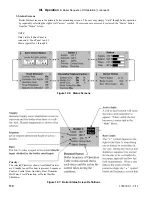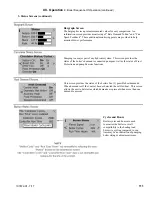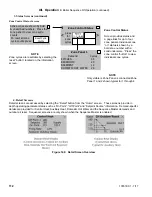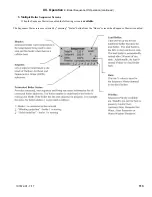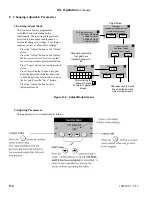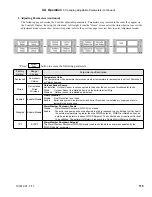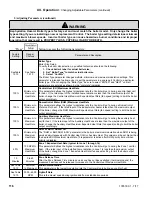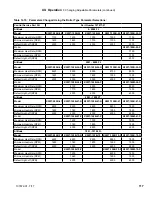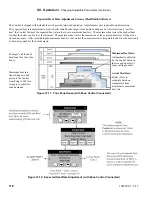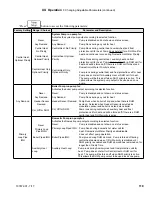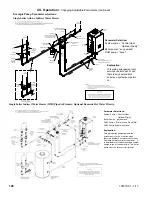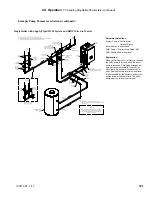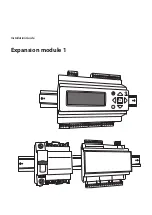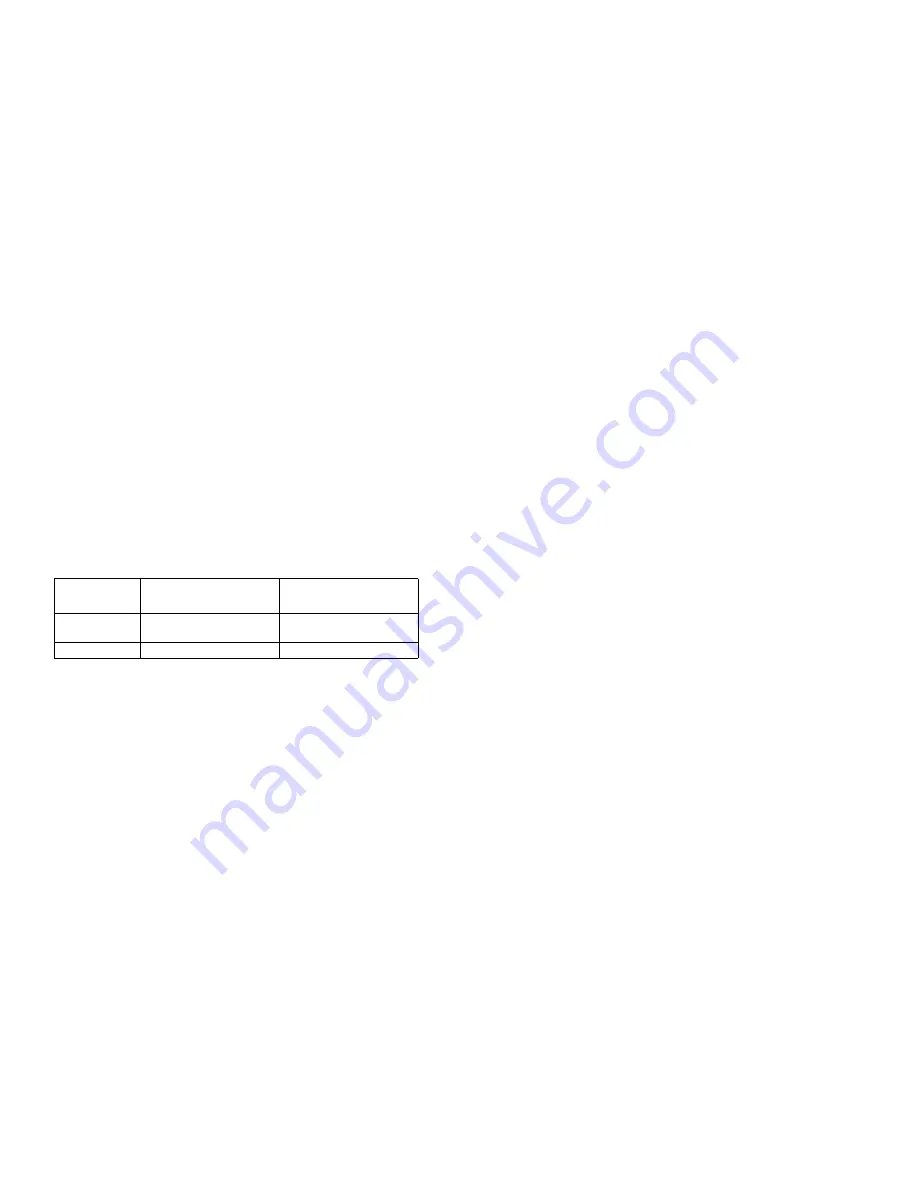
106
107672-01 - 7/17
XII. Operation
(continued)
6. Stack High Limit
The Control monitors the flue gas temperature sensor
located in the vent connector. If the flue temperature
exceeds 194°F (90°C), the control begins to reduce the
maximum blower speed. If the flue temperature exceeds
204°F (96°C), a forced boiler recycle results. If the
flue temperature exceeds 214°F (101°C), the control
activates a manual reset Hard Lockout.
7. Flame Current Modulation Boost
To help prevent nuisance shutdowns when the boiler is
firing at minimum firing rates, the control will increase
the firing rate when the flame current is too low.
8. Ignition Failure
The Control monitors ignition using a burner mounted
flame sensor. In the event of an ignition failure, the
control retries 5 times and then goes into soft lockout
for one hour.
9. Central Heating System Frost Protection
When enabled, Frost Protection starts the boiler and
system pump and fires the boiler when low outside air
and low supply water temperatures are sensed. The
Control provides the following control action when
frost protection is enabled:
Table 12.2: Frost Protection
Device
Started
Start
Temperatures
Stop
Temperatures
Boiler Pump
Outside Air < 0°F (-18°C)
Supply Water < 45°F (7.2°C)
Outside Air > 4°F (-16°C)
Supply Water > 50°F (10°C)
Boiler
Supply Water < 38°F (3.3°C) Supply Water > 50°F (10°C)
FROST PROTECTION NOTE
The Control helps provide freeze protection for the boiler
water. Boiler flue gas condensate drain is not protected from
freezing. Since the Control only controls the system and
boiler circulators individual zones are not protected. It is
recommended that the boiler be installed in a location that is
not exposed to freezing temperatures.
D. Multiple Boiler Control Sequencer
1. “Plug & Play” Multiple Boiler Control
Sequencer
When multiple boilers are installed, the Control’s
Sequencer may be used to coordinate and optimize
the operation of up to eight (8) boilers. Boilers are
connected into a “network” by simply “plugging in”
standard ethernet cables into each boiler’s “Boiler-To-
Boiler Communication” RJ45 connection.
2. Sequencer Master
A single Control is parameter selected to be the
Sequencer Master. The call for heat, outdoor and
header sensors, and common pumps are wired to the
Sequencer Master “enabled” Control.
3. Lead/Slave Sequencing & Equalized Run Time
One boiler is a “Lead” boiler and the remaining
networked boilers are “Slaves”. When demand is
increasing, the Lead boiler is the first to start and the
Slave boilers are started in sequential order (1,2,3,…)
until the demand is satisfied. When demand is
decreasing, the boilers are stopped in reverse order with
the Lead boiler stopped last (…,3,2,1). To equalize
the run time the sequencer automatically rotates the
Lead boiler after 24 hours of run time.
4. Improved Availability
The following features help improve the heat
availability:
a. Backup Header Sensor: In the event of a header
sensor failure the lead boiler’s supply sensor is used
by the Sequence Master to control firing rate. This
feature allows continued coordinated sequencer
control even after a header sensor failure.
b. “Stand Alone” Operation Upon Sequence Master
Failure: If the Sequence Master Control is powered
down or disabled or if communication is lost
between boilers, individual boilers may be setup
to automatically resume control as a “stand alone”
boiler.
c. Slave Boiler Rate Adjustment: Each slave boiler
continues to monitor supply, return and flue gas
temperatures and modifies the Sequence Master’s
firing rate demand to help avoid individual boiler
faults, minimize boiler cycling and provide heat to
the building efficiently.
d.
Slave Boiler Status Monitoring: The Sequence
Master monitors slave boiler lockout status and
automatically skip over disabled boilers when
starting a new slave boiler.
5. Customized Sequences
Normally, boilers are started and stopped in numerical
order. However, custom sequences may be established
to optimize the heat delivery. For example, in order to
minimize boiler cycling, a large boiler may be selected
to run first during winter months and then selected to
run last for the remainder of the year.
6. Multiple Demands
The Sequence Master responds to Central Heat,
Auxiliary Heat, DHW and frost protection demands
similar to the stand alone boiler. For example, when
selected and DHW priority is active, the sequence
master uses DHW setpoint, “Diff Above”, “Diff Below”
and pump settings.
7. Shared or Isolated DHW Demand
When the Indirect Water Heater (IWH) parameter is
set to “Primary Piped” the Sequence Master sequences
all required boilers to satisfy the DHW setpoint. When
“Boiler Piped” is selected only the individual slave
boiler, with the wired DHW demand and pump, fires
to satisfy the DHW setpoint.
Summary of Contents for K2WT-080B
Page 83: ...83 107672 01 7 17 PAGE LEFT INTENTIONALLY BLANK...
Page 89: ...89 107672 01 7 17 X Wiring continued Figure 10 5 Internal Ladder Diagram...
Page 90: ...90 107672 01 7 17 X Wiring continued...
Page 91: ...91 107672 01 7 17 Figure 10 6 Internal Wiring Connections Diagram X Wiring continued...
Page 102: ...102 107672 01 7 17 Lighting and Operating Instructions XI Start Up and Checkout continued...
Page 147: ...147 107672 01 7 17 XV Service Parts continued...
Page 151: ...151 107672 01 7 17 XV Service Parts continued...
Page 153: ...153 107672 01 7 17 XV Service Parts continued 85 86 91 95...
Page 162: ...162 107672 01 7 17...
Page 163: ...163 107672 01 7 17...
Page 164: ...164 107672 01 7 17...
Page 165: ...165 107672 01 7 17...
Page 166: ...166 107672 01 7 17...
Page 167: ...167 107672 01 7 17...

